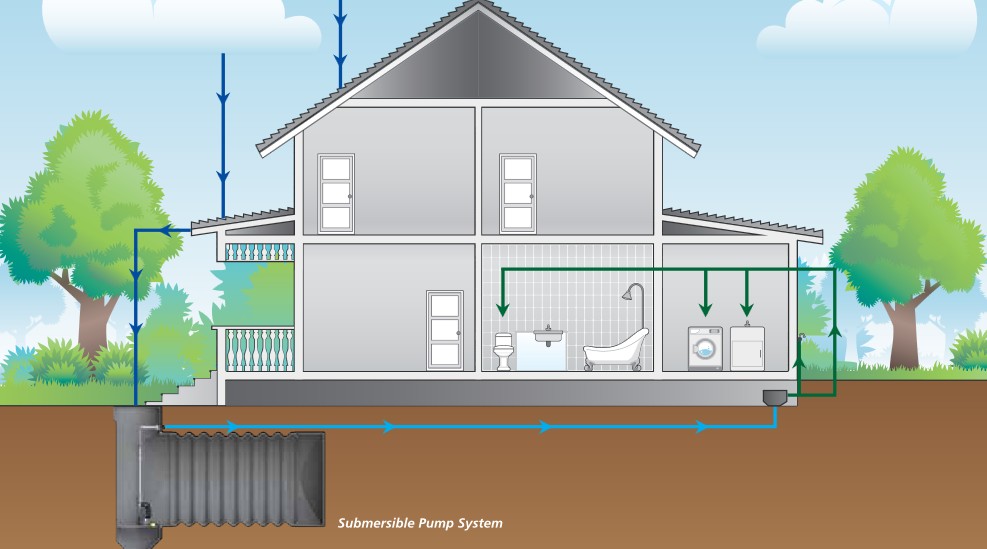Harvesting of rainwater is an efficient and eco friendly technique of reducing water usage in your home, which will lead to lower water bills and better use of the resources supplied by nature. Moving to an eco friendly rainwater harvesting […]
Harvesting of rainwater is an efficient and eco friendly technique of reducing water usage in your home, which will lead to lower water bills and better use of the resources supplied by nature. Moving to an eco friendly rainwater harvesting method is neither difficult nor time consuming and will result in a large variety of benefits for your home.
Water is what we need to live. However millions of citizens all throughout the planet do not have a sufficient amount of this fundamental necessity for their hygiene and/or have a lack of excellent quality water for consumption and food preparation. In a lot of families both women and men too require water for animals, vegetables, crops and trees. In Auckland we have an abundance of water however our system of delivering water to our homes is antiquated and costly to maintain. There is considerable cost increases coming from the councils to extend and maintain the water supply pipes and pumping systems.
Although we have alot of water , it is expensive very water based on global pricing!!
Wherever groundwater and surface water sources aren’t enough, rainwater may be a sustainable option and Harvesting of rain from the roof is the most likely source.
Because of a variety of factors which take account of larger transportation expenses, random weather patterns and increased spending across the nation; water bills are increasing and are probable to go on to do so for quite some time.
In addition to increased water costs, a lot of homes are looking to be converted into greener, more resourceful and more self reliant and look towards these technologies as worthwhile investments.
Harvesting rainwater is the fastest and easiest way for a home to lessen water use and become more efficient.
By means of harvesting rainwater, you can cover up up to 50% of a family’s usual home water requirements – this translates into savings on bills and at the same time helping the environment.
1. Low-cost Maintenance
You really don’t need to invest much money to keep the systems going. Purifying the water is not necessary if you don’t intend to drink the water.
2. Lower Water Bills
You can use your collected rainwater for flushing toilets, washing your clothes, and watering the garden. This’ll help in keeping your water bills to a minimum.
3. Great for Irrigation
Rainwater is pure rainwater without any added chemicals into it so you can make sure that this is reliable for irrigations.
4. Reduces Ground Water Demand
As our population increases, so does the demand for water. In many areas, we are reliant on dams, rivers and aquifers for our water sources.
5. Reduces Soil Erosion and Floods
By collecting rainwater, you can minimise the likelihood of flooding around your home and reduce the load on the council stormwater system.
6. Multi-Purpose
You can use rainwater in flushing down toilets, washing your cars and motorcycles, and etc.
1. Unreliable Rainfall
Rain doesn’t fall every day making it hard for you to collect some daily. However Auckland does not suffer from this and we have a high rainfall on average compared to other citys.
2. Starting Costs
If you choose to have a rain harvesting system, then the time to implement these systems is when you are building your home as the additional costs are recovered quicker. Allocating funds for a system installed in your home is money well spent and will add value to your home.
3. Chemical roof seepage
Some roof coatings may contain harmful chemicals so it is advisable to talk with one of our consultants first to ensure your roof meets the guidelines.
5. Storage limits
There is a practical limit to how much water you can store on your property and is often limited by your section size and appropriate locations for the tanks . Especially in winter, the rain captured will be greater than the capacity of the tank. APD’s StormLite detention/retention tanks are designed specifically deal with this situation and will release the excess water to the council stormwater system in accordance with council requirements.

Subscribe for regular updates, your email address is required for subscription.